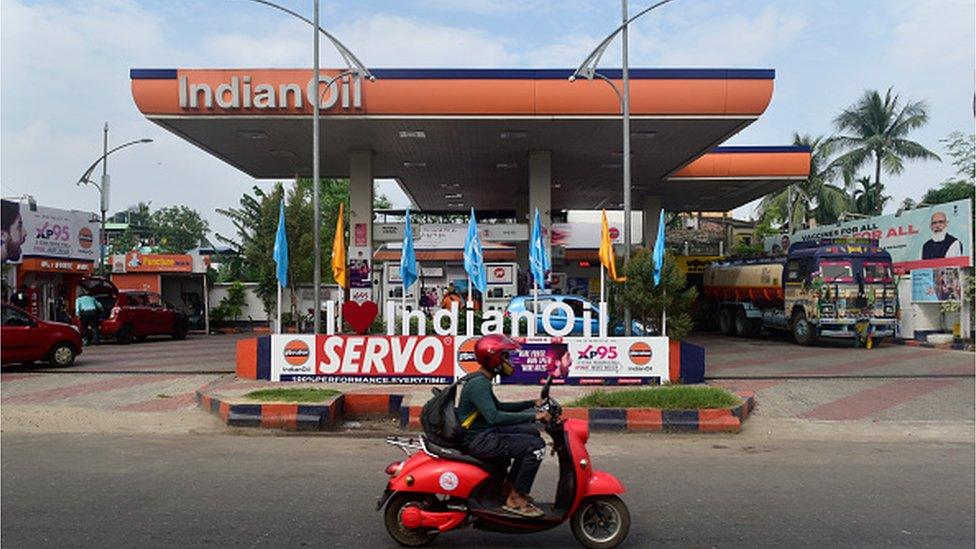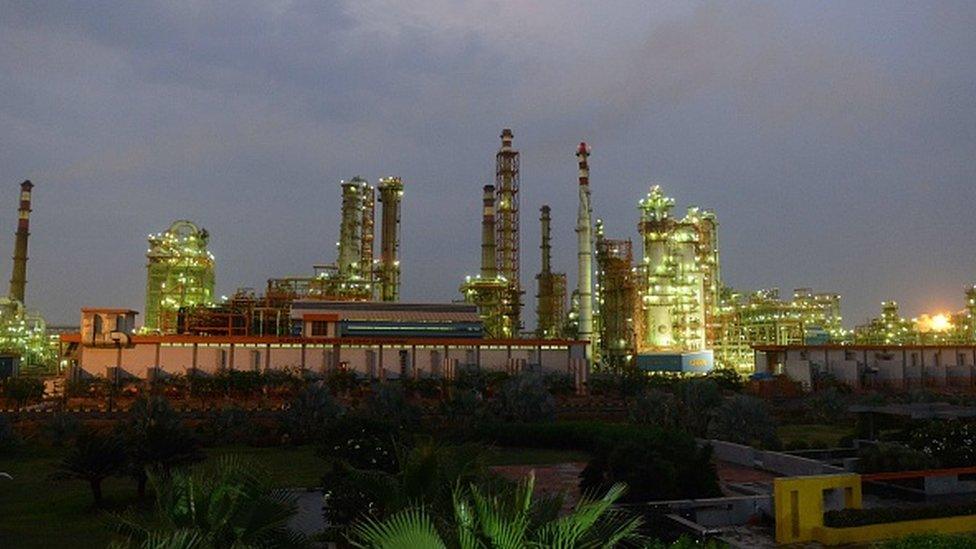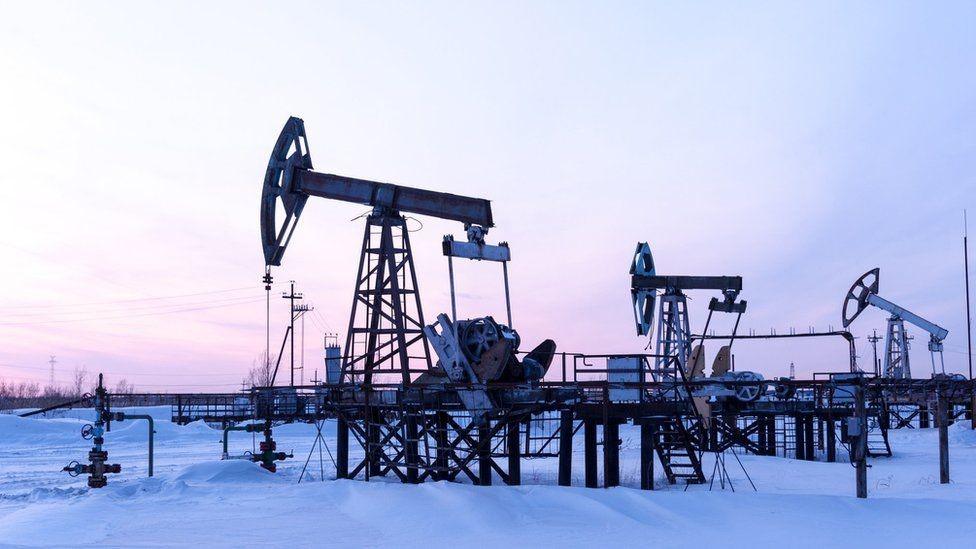Ukraine: Is India headed for an oil price shock?
- Published

India is the world's third largest consumer of oil, behind US and China.
With Brent crude - the international benchmark for oil prices - surging to $113 a barrel sparked by the war in Ukraine, is India headed for an oil price shock?
The price rise, the highest since June 2014, is worrying India no end.
Guzzling up to 5.5 million barrels every day, India is the world's third largest consumer of oil, behind US and China.
But India imports 85% of its oil from more than 40 countries. The bulk of supplies come from the Middle East and the US. (India imports only 2% of its supplies from Russia.) Imports include oil which it converts to petroleum products after refining.
India exports petroleum products - accounting for more than 13% of its total exports - to more than 100 countries.
Demand for oil is growing at 3-4% every year in the country. In a decade, India could easily end up consuming more than 7 million barrels a day, say experts. Much of the oil goes into keeping some 300 million vehicles on the road and for different industries such as petrochemicals and plastics. India uses diesel to produce some 80,000 mega-watts of electricity. Diesel generators provide electricity to a lot of private housing.
India's tax revenues are also heavily dependent on oil. Oil accounts for more than 50% of federal excise duties - tax collected on goods produced within the country. States depend on oil taxes to shore up their revenues.
"We are the hottest market for oil. And there is no other country among large emerging economies which is more vulnerable to high oil prices than India," Narendra Taneja, a leading energy expert, said.

India exports refined petroleum products to more than 100 countries
The health of India's economy is inextricably connected to oil.
The government's latest Economic Survey, external has projected 8-8.5% growth on the assumption that oil prices would remain between $70-$75 a barrel. "Oil prices at anything more than $68-$70 a barrel is bad news for our economy," Mr Taneja said.
For one, it widens India's current account deficit when the value of imports of goods, services and investment income exceeds exports.
Second, it puts pressure on prices at a time when inflation has already climbed to above 6%.
High oil prices also hurt growth and slow down the economy as people end up spending more money on energy and spend less on other things. And when growth sputters, the government's fiscal calculations can go completely awry.
The pandemic battered Asia's third-largest economy, which was already in the throes of a prolonged slowdown. It is still struggling: growth slowed down to 5.4% in October-December 2021. Joblessness is rife. A further slowdown triggered by an oil price shock will leave the government with less money to spend on a planned massive infrastructure push to spur growth and welfare benefits and subsidies.

Russian oil makes up around 8% of global supply
"At the end of the day, high oil prices end up shrinking the government's resources", said Dharmakirti Joshi, chief economist at Crisil, a ratings and analytics firm.
Many believe that India's ample $633bn (£473bn) foreign exchange reserves provide a good cushion to weather an oil price shock. Also, oil-producing countries could ramp up production to bring prices down and offer relief.
Experts believe the rise in oil prices over fears of supply disruptions from the war in Ukraine shows that India needs to decentralise its energy policy by letting states come up with their own initiatives - seaboard states like Andhra Pradesh, Tamil Nadu and West Bengal could harness the plentiful wind energy, for example - and push "every single source of energy" that is available.
Per-capita consumption of energy in India is still among the lowest in the world. "The war in Ukraine is a major wake-up call for us to plan our energy security better," Mr Taneja said.
The last time oil prices surged past $100 in 2014, India battled high inflation, the current account deficit shot through the roof and growth slowed.
"How long this war will continue and how high the prices will rise to we don't know. There's so much uncertainty. It is like driving in the fog. You don't really know what lies ahead," Mr Joshi said.

You might also be interested in:
India has big solar ambitions, but could import taxes cast a shadow on its plans?
